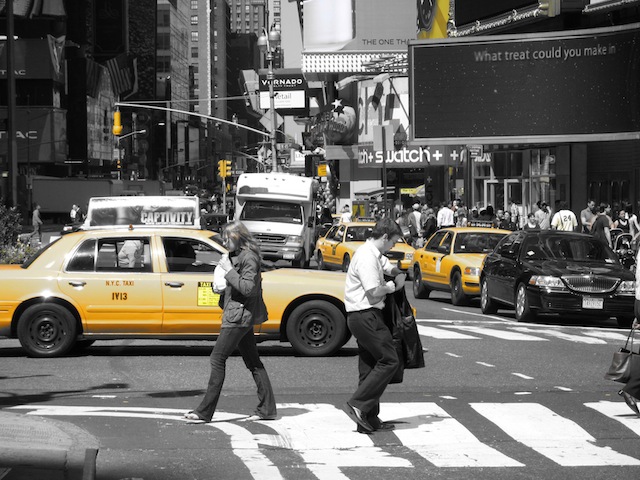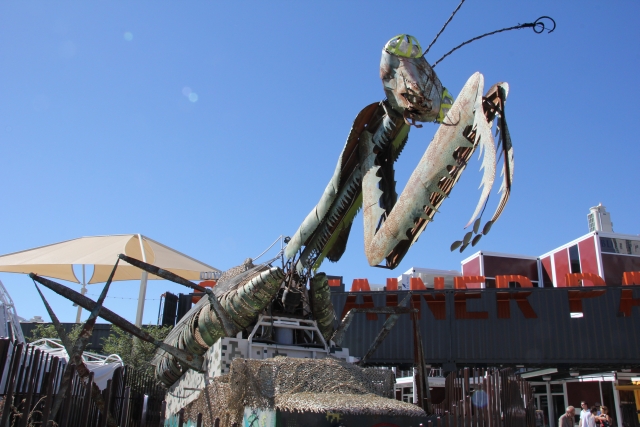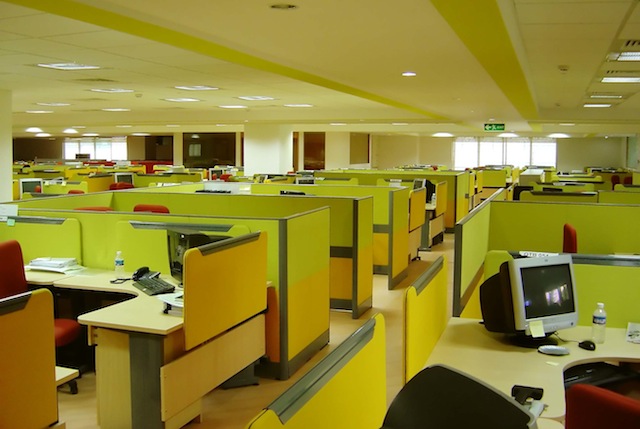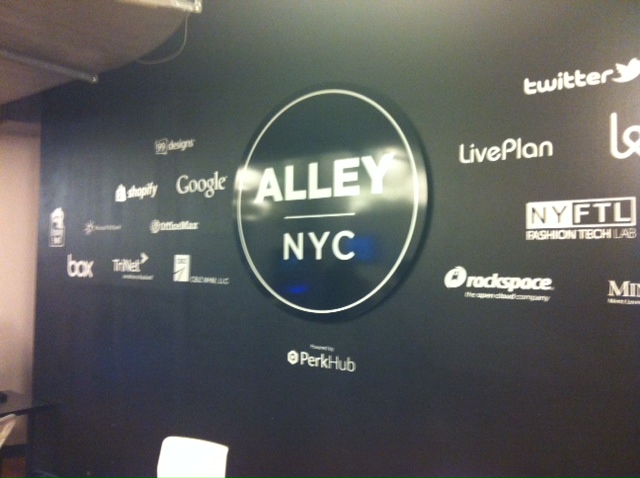Stepping off the bus at Las Vegas’ Fairmont Street in the early morning is a reminder of how seedy nightlife areas look in the harsh daylight.
The reason for being in Downtown Las Vegas on a warm Monday morning was to tour Tony Hsieh’s Downtown Project, a scheme to revitalise the rundown and neglected town centre of the gambling and convention mecca.
One of the striking things about Las Vegas is how much of it pretends to be somewhere else; The Luxor, New York, New York, The Ballagio. It’s almost as if the fantasy land of the American Dream is a little embarrassed about where it is.
Not that the tourists are embarrassed with millions pouring in every year to enjoy the gambling, entertainment and the pasteurized sin on offer along Las Vegas’ glitzy strip of mega casinos.

Five miles north the mega casinos and bright lights, the luck runs out. The best thing locals have to say about Las Vegas’ downtown district is “it is better than it was.”
One of the reasons it’s better is because of one man — Tony Hsieh, the founder of online shoe retailer Zappos. Hsieh moved his business to Las Vegas because, in the entrepreneur’s view, San Francisco was ‘hostile towards company service.’
The Downtown Project is the result of a promised $350 million investment by Hsieh to invigorate the city centre of Las Vegas.
However the project has hit problems with Hseih recently stepping down from his position, layoffs being announced and community programs being cut back, leading critics to claim the project is in jeopardy.
So a tour of the project during a recent visit to Las Vegas was well timed to judge how things are going.
The tour starts with the small group meeting at The Window, an arts and meeting space on the ground floor of the Ogden residential tower which closed down in September as part of the scheme’s recent cutbacks.
Gathering in the room with our tour leader Maggie is a somewhat spooky experience with all The Window’s furniture, books and exhibits intact as on the day they were left at the end of the space’s six month lifespan.

Leaving the room’s contents intact and unpacked doesn’t engender confidence that The Window will find a new home. In all, starting the tour in the abandoned workspace is an unsettling start.
After a quick explanation of The Downtown Project, Maggie leads takes us around the corner to the Ogden’s residential entrance where we ride the elevator to Tony Hsieh’s upper level apartment.
The building doesn’t have a fourth or fourteenth floor; something familiar to anybody who’s lived in a city where property developers are courting Chinese investors — the sound of the word ‘four’ in Mandarin and Cantonese has unlucky overtones.
On the way up to the Twenty-Third floor apartment it’s also an opportunity to gauge the dynamic between the residents of the building; in reviews of the complex, many residents not associated with Hsieh’s projects have complained they have been marginalised.

Once in Hsieh’s apartment, it’s an impressive look into the domestic life of a modern successful internet tycoon with common workrooms, open plan living and a jungle themed party room featuring a hanging garden.

The most important thing about Hsieh’s apartment is it gives a sense of perspective of the project with views across the downtown district, a panorama of the Las Vegas strip with the huge casinos rearing out the suburbia and the refurbished Goldspike Casino that is becoming a community hub of sorts.
Hsieh’s apartment also gives some ideas of the plans the tycoon has, particularly the Life Is Beautiful festival that Maggie promises will be a “combination of Burning Man and South by South West.”

Returning to street level from Hsieh’s apartment does give the impression there are two breeds of residents in The Ogden; the Zappos and Downtown project crowd who treat the other residents with polite disdain.
The dismissive attitude towards non-tech outsiders is common among the technology startup communities around the world but that doesn’t make it any less jarring for those living with it in their building.
Stepping out into the mid morning heat of Las Vegas, we go around the corner to the Beat Coffeehouse, part of the Emergency Arts Collective that’s based in a disused medical centre and which, interestingly, isn’t part of Hsieh’s downtown project.

A block further along is The Container Park, the retail and entertainment hub of the Downtown Project that welcomes visitors with a giant preying mantis, shown at the beginning of this post.
The container park is an interesting rag tag collection of independently owned food and retail outlets, a test laboratory for hospitality and bricks-and-mortar shopping outlets. In the mid morning heat it’s somewhat deserted.
Unfortunately that’s where our official tour concluded and it was time to explore the dubious delights of downtown Las Vegas on our own. The locals are right, there isn’t much.
Later that evening I returned to see how The Downtown Project and downtown Las Vegas itself do at night. The difference with daytime is spectacular.
Getting off the bus at the Fremont Street Experience with its roofed in mall the boasts the world’s biggest video screen is a great difference from its dowdy daytime appearance.
Fremont Street jumps with the tame bacchanalia that’s the hallmark of Las Vegas; all the false unfulfillable promise of sexual and economic success that defines modern America.

The three block walk from West Fremont street to the Container Park is stark; while the Beat Coffeehouse is packed with drinkers enjoying the live band, the street is dark and quiet; it’s quite easy to feel uncomfortable on the short walk.
At the Container Park itself, things aren’t exactly busy. A few families play on the central green while a band plays. Few of the food stalls are selling anything and most of the shops are closing at 8pm. While it’s a Monday night, it’s not encouraging.

Leaving Downtown Las Vegas on the WAX express bus — fifteen minutes to the MGM Grand down the interstate rather than the hour plus trudge down the strip on the Deuce — it’s a good opportunity to reflect on a superficial tour of the Downtown Project.
For young families wanting to move from the wallet crushing costs of San Francisco and Silicon Valley, Las Vegas could be an option but it’s going to require more business than Zappos and a small cluster of startups.
The city is going to need more drop in spaces like The Windows — something like Google Campus is going to be needed to encourage smart young entrepreneurs to make the journey and try their luck.
Another aspect is more accommodation is needed as right now the housing stock around the downtown district is either run down or overpriced — while cheap by San Francisco or New York standards prices don’t reflect the fact Las Vegas is not an economic powerhouse like the two cities.
The Ogden building is an example of everything that is wrong in the current global property mania with high priced, high maintenance apartments aimed at rich investors rather than ordinary people and their families.
For residents transport also remains a problem although Las Vegas’ public bus system is surprisingly good, one suspects the service is subsidised by the immensely popular Deuce double decker buses carrying crowds of tourists up and down the strip.
To get a San Francisco or Brooklyn type critical mass into the city requires a high density population and a deeper local tax base which is something beyond Hsieh’s power.
Las Vegas also has the problem that it is in a competitive field with towns like Kansas City and Des Moines among others all vying to attract young entrepreneurs to their low cost communities. Just being cheaper than Mountain View or South of Market is not enough on it’s own.
Overall, it’s not hard to leave Las Vegas with a feeling that the Downtown Project is floundering. To build a community like that envisioned by Tony Hsieh takes more that $350 million and a few years work; it’s a lifetime commitment and it needs several generations of funding.
That the Fremont Street Experience and The Beat Coffeehouse are both jumping while the Container Park is quiet also tells us that building a community requires diverse groups and that no one guiding agency, private or public can build a thriving industrial centre.
It is possible that Zappos and Hsieh may plant the seed for Las Vegas to become a technology and business hub, but there’s a long way to go and it will need more than one man to drive it.
“Build it and they will come,” was something I heard constantly about the plans to invigorate the city’s centre from its supporters and Las Vegas residents. Whether the Downtown Project is Tony Hsieh’s field of dreams is for history to judge.

Similar posts:













